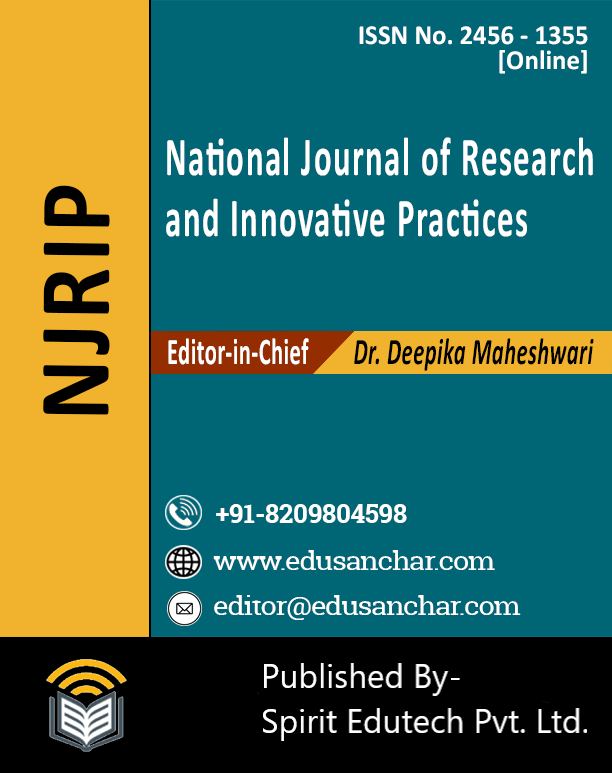
Review of Student’s Achievement & Gender Bias in Co-Education and Same-Sex School
Author Name :- Dr Nisha Tyagi,,
Journal type:- NJRIP-National Journal of Research and Innovative Practices
Research Field Area :- Department of Education ; Volume 6, Issue 7, No. of Pages: 12
Your Research Paper Id :- 2021010714
Download Published File :- Click here
Abstraction :-
Keywords :-
Student, Achievement, Gender, educatipon
References :-
Able, Graham (2000, January). British A-level results and single-sex education. International Boys’ School Coalition, series 2, no. 2. Adult Literacy in New Zealand (1996).
Abstract from Turning Points Guide to School Structures that Support Learning and Collaboration. www.turningpts.org. Australian Council for Educational Research (2001).
Academic performance of students at single-sex and coeducational schools. http://www.acer.edu.au/. Australian Council for Educational Research (2002).
Access Quality and Efficiency in Education. World Bank Country Study: Washington, DC. Yates, L. (1993).
An exploratory study of risk-taking and attitudes in a girls-only middle school math class. Elementary School Journal, 98(1): 15- 26. 129 Streitmatter, L. L. (1999).
An Investigation into Gender Differences in Achievement, Phase 1: A Review of Recent Research and LEA Information on Provision. Slough: National Foundation for Education Research. Tannen, Deborah (2001).
Are XX and XY brain cells intrinsically different? Trends in Endocrinology and Metabolism, 15:6-11. Ascher, Carol (1992).
Association for Supervision and Curriculum Development (2001, summer). How teachers can develop boys’ interests in literature. Arlington, Virginia: ACSD.
At The Turning Point: The Young Adolescent Learner (1995).
Attention deficit hyperactivity disorder. In Mash, E.J. and Barkley, R.A. (Eds.). Child Psychopathology. New York: Guilford. Biddulph, S. (1997).
Biobehavioral responses to stress in females: tend-and-befriend, not fight-or-flight. Psychological Review, 107: 411-429. Taylor, Shelley (2002).
Booker, Keonya C. (2006). School belonging and the African American Adolescent: What do we know and where should we go? The High School Journal. Chapel Hill, North Carolina: The University of North Caroline Press. Boyatzis, Chris, and Eades, Julie (1999).
Boys in school and society. Camberwell, Victoria. http://www.acer.edu.au/. Bailey, Susan (2002).
Carnegie Council on Adolescent Development, Boston. United States Department of Education (1998).
Constructing and deconstructing girls as a category of concern. Education into the 21st Century: Dangerous Terrain for Women? A. Mackinnon, Elgquist-Saltman and A. Prentice. London: Falmer Press. Young, D.J., and Fraser, B. J. (1990).
Differences between pupils from mixed and single-sex schools in their enjoyment of school subjects and in their attitudes to science and to school. Educational Review, 42(3):221-231. Standley, Jayne (1998).
Educating women for achievement. Paper presented at the annual meeting of the American Association for the Advancement of Science, Section on Education, Washington, D.C. Times Educational Supplement (2000, August 25).
Education Review Office, New Zealand. Thompson, Terri, and Ungerleider, Charles (2004, November). Single Sex Schooling: Final Report. The Canadian Centre for Knowledge Mobilization, the University of Columbia. Tidball, M. Elizabeth (1972, December 27).
Educational equity for girls and women. Washington, DC: United States Government Printing Office, p. 18. United States Department of Education (2001).
Examination results in mixed and single-sex schools. Reynolds, David (Ed.) Studying School Effectiveness. London: Falmer. Stockard, J., and Wood, J.W. (1984).
For girls only: Making a case for single-sex schooling, New York: State University of New York Press. Sukhnandan, L. (2000).
Gender differences in preschoolers’ and kindergartners’ artistic production and preference. Sex Roles, 41:626-38. Boyd, Sr., Frederick D. (2000).
Gender Gaps: Where Schools Still Fail Our Children. New York: Marlowe. American Association of University Women (2004, March).
Gender in Education. San Francisco: Jossey-Bass. Baker, D. (2002).
Girls and Girls-Only Schools. Manchester, England: Equal Opportunities Commission.
Good intentions: an experiment in middle school single-sex science and mathematics classrooms with high minority enrollment, Journal of Women and Minorities in Science and Engineering, 8: 1-23. Baker, D. and Jacobs, K. (1999).
Growing smart: what’s working for girls in schools. Washington, DC: AAUW Educational Foundation. American Association of University Women (1998).
How schools shortchange girls: a study of major findings on girls and education. Washington, DC: AAUW Educational Foundation. American Association of University Women (1995).


